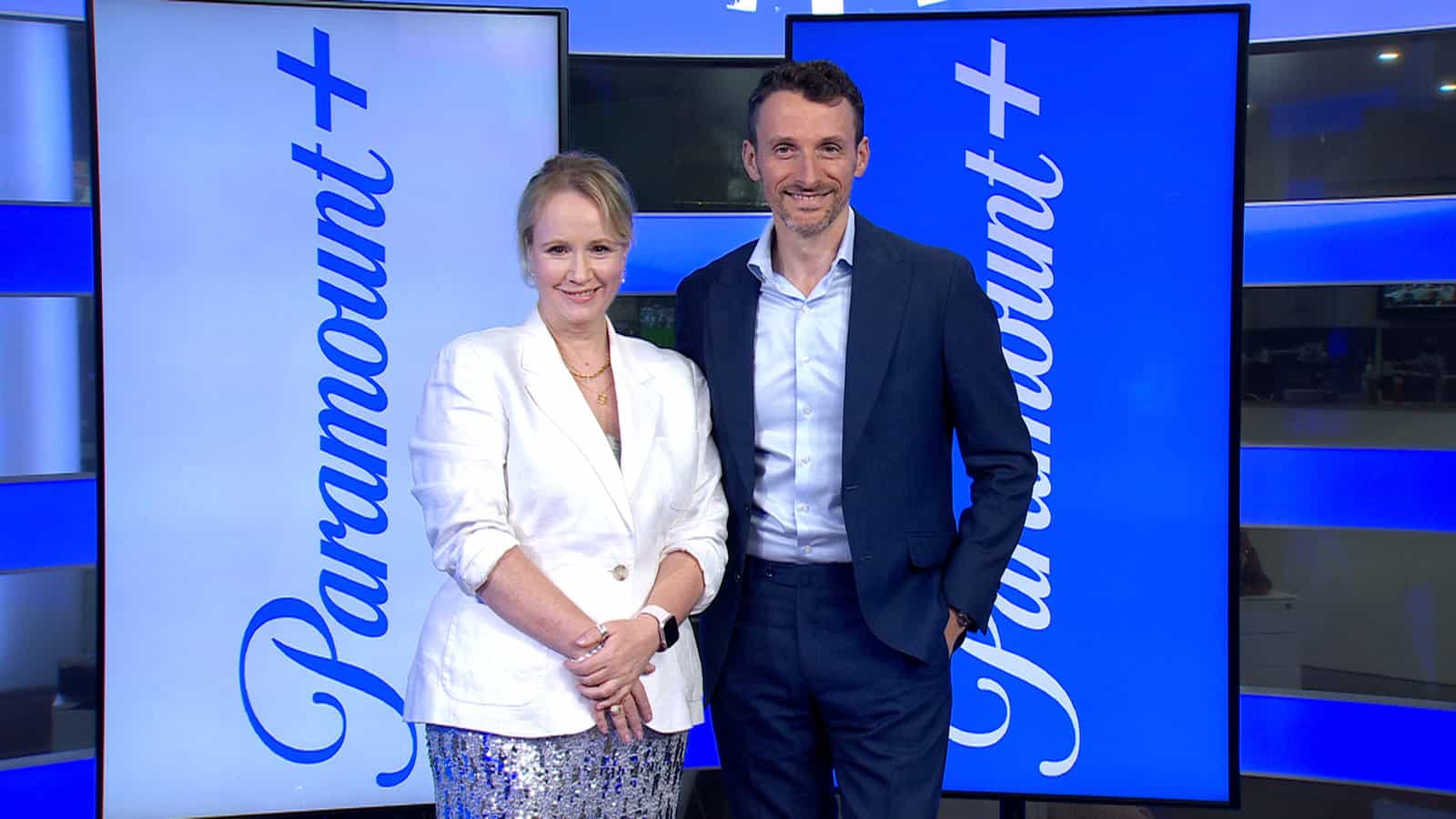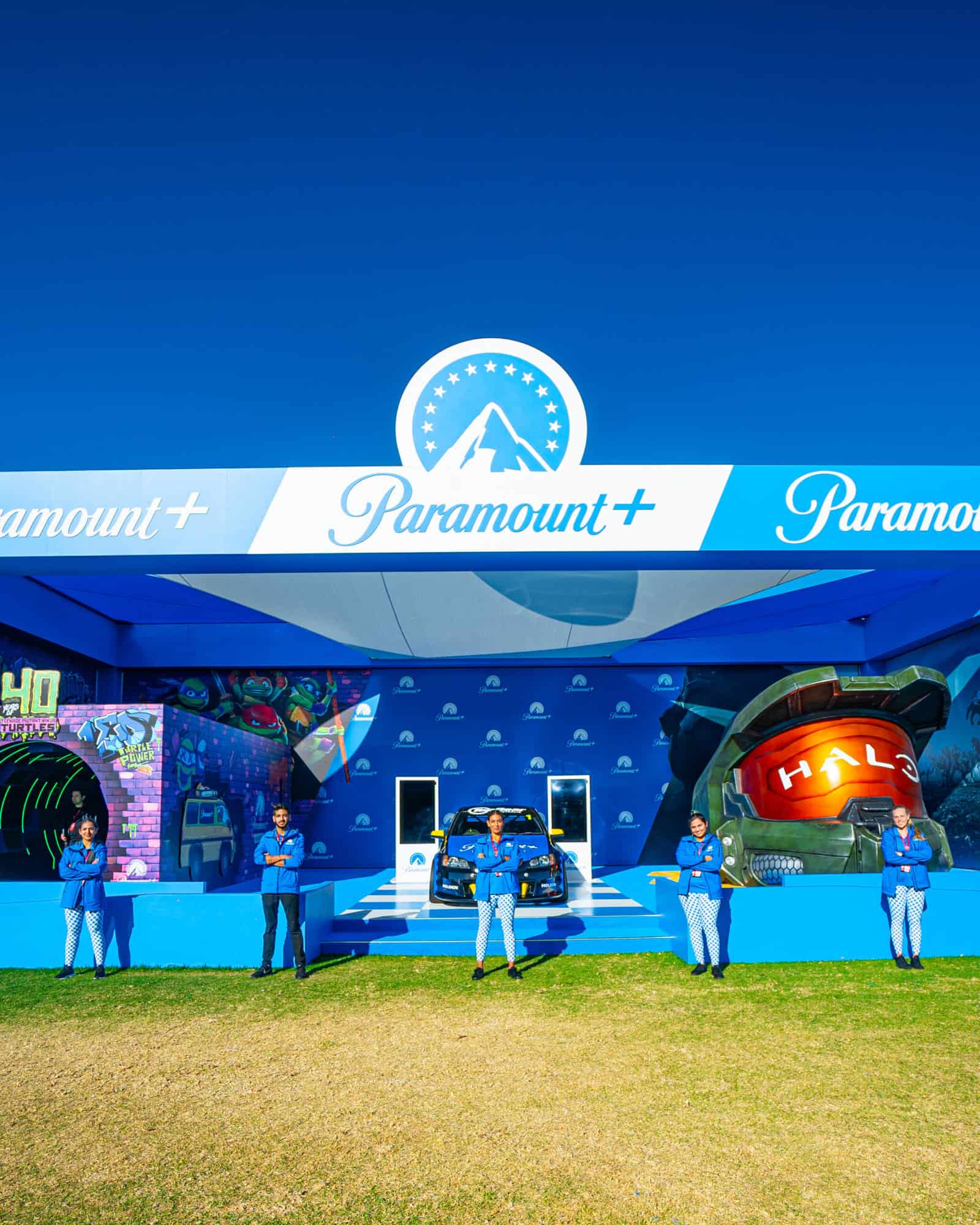Beverley McGarvey’s top priorities in her new role are to grow Paramount+ in Australia – “one of the biggest and most important markets” that “really punches above [its] weight in terms of SVOD opportunity” – and help accelerate the business’ path to profitability.
One of Paramount+’s top global executives, and McGarvey’s boss, Marco Nobili, laid out those goals to Mediaweek, praising McGarvey for the work she’s done to date: “Bev is such a great leader for us, not only in Australia, but across the globe. Some of the things that we’ve done in Australia with Bev have been … best practice.”
Nobili is in Australia this week off the back of the announcement of Paramount+’s ad-supported tier (it will launch in Australia in June), and McGarvey’s promotion last week. She is now president of Network 10 and Paramount’s regional lead across AUNZ, following the departure of her former co-lead Jarrod Villani in February.
The Paramount+ EVP and international general manager noted that in three years, the streaming platform has grown to 67 million subscribers across 45 markets: “It’s just a gigantic step. I mean, when you put this into perspective versus others, it’s an amazing milestone over such a short period of time.”
Its third birthday is “a good moment for us to target streaming profitability. In our latest earnings, we have announced that we are targeting being profitable in the US streaming business next year. And overall, we are accelerating our overall path to profitability.
“How do you grow your top line revenue by managing cost, prioritisation, and resources, making the best out of our US content, and making the best out of the local assets and the ecosystem that we have? Really harness the power of partnership … partnership on the marketing side, but also on the distribution side.”
Those are the questions Nobili is tasking McGarvey with answering across Australia and New Zealand. She has been reporting to him for a few years already, so “we have a good cadence of understanding what the global streaming priorities are, and how Australia can fit into that,” McGarvey said. She wants to focus on bringing content across the Paramount ecosystem together “to make us bigger than the sum of our parts.”
‘We can continue to grow at an accelerated rate’: Local performance
Nobili argued that despite its modest population, Australia has an outsized impact, confirming it “is certainly a market that is top priority for the company across streaming and non-streaming. For Paramount+, it’s a key market.”
He set out a number of reasons for that impact: Australians tend to stack a number of streaming subscriptions and consume a lot of US series, the market has a strong average revenue per user, and the Network 10 and 10Play alignment adds to the overall content offering. Paramount+ is the fastest-growing streamer in Australia, he said.
“We’re going to accelerate that growth,” Nobili continued. “So in general, I remain very optimistic about not only the results we’ve had so far, but also the future ahead of us.
“I am actually pretty convinced that we can continue to grow at an accelerated rate versus what the rest of the market is … And when you think about that opportunity, having the launch of an ad-supported tier at a price point of $6.99. It really makes it the most affordable, premium quality streaming service in the market.”
The streamer’s strategy includes a dual focus on acquisition and retention. Nobili said US series like Halo and Gentleman in Moscow are heavy-lifters in attracting new subscribers, while the NCIS franchise, including NCIS Sydney, plays both an acquisition and retention role, because it “drives so many hours on the service.”
‘Look at it on a tactical basis’: F1 broadcast rights and Paramount+ partnership
The weekend’s Formula 1 Australian Grand Prix attracted unprecedented commercial interest for Ten, and the race’s strongest commercial viewership shares on Ten since 2008. Sunday’s race reached 1.55 million Australians, and had its biggest ever livestream audience (up 51% year-on-year).
On the ground at Albert Park, it was impossible to miss the Paramount+ branding: trackside signage and a large activation were part of the streamer’s global sponsorship deal with the sport.
McGarvey said the key to approaching the marketing opportunity was focusing on clearly-aligned Paramount+ content, like the soon-to-be-launched Top Gear Australia. Commercially, the focus was on “bringing in advertising clients that have an interest in that type of sport and entertainment, but more broadly, just about leveraging those sorts of assets across the entire ecosystem.”
While Ten has the linear rights, Foxtel owns the breadth of F1 broadcast rights in Australia until 2026 – believed to be worth $40 to $45 million. Paramount+’s global deal does not encompass broadcast rights – in the US, for example, ESPN retains the broadcast rights until 2025.
Nobili said the global sponsorship “certainly has done a great job for us. I hope if you ask the same question to F1 … that they’re also very happy about the partnership.”
“I think it’s great for the overall Paramount+ brand and our content offering. But I think it’s also great for F1 to have an entertainment partner that can come together and provide a new and surprising experience … those things also need to be entertaining and fun and that’s what we are as a brand.”
McGarvey won’t rule out Ten vying for the F1 rights when they come up again in 2026.
“We look at all the opportunities that come along and assess what’s right for us,” she said.
“Sport is important. And as Marco said, it needs to be entertaining, and it needs to be a good fit. We love our deal with football [Ten has the A Leagues rights] and have great plans to grow that. So I think, the F1, like everything else, we look at it on a tactical basis, when the rights come around.”
Stan’s unfair prominence advantage?
The free-to-air bosses – McGarvey at Ten, James Warburton at Seven, Mike Sneesby at Nine, James Taylor at SBS, and David Anderson at ABC – have united to campaign for senators to push through proposed prominence laws. The bill is designed to ensure that FTA channels’ BVOD apps are easy for audiences to find and install on smart TVs.
However, Nine is arguing that Stan should also be captured by the prominence protections, as a local streaming platform investing in local content, and because it voluntarily – ie without being forced to via regulations – offers functions like closed captions and audio descriptions.
McGarvey said Paramount+ already experiences “great prominence,” and that she views the streaming platform as separate to the issue facing the linear business.
“With my free to air hat on, we [the FTA networks] are extremely aligned that prominence is critical. We have an obligation to produce 55% Australian content plus sub-quotas. The key priority in free to air is to provide Australian content for all Australians, to provide news, to provide information, to provide access to sport in a way that all Australians can access.
“In terms of how Paramount+ and Stan fit into that, we do do Australian content on Paramount+, but in terms of the prominence piece, it is more how we work with Paramount+, it’s more a commercial play, because for us, it’s a different business proposition.
“And we get great prominence at Paramount+ through our great content and our brand building and our marketing. Our position is very much firmly that prominence is important for our linear business, and Paramount+ is an incredibly important asset here. But we see it operating in a different way.”


